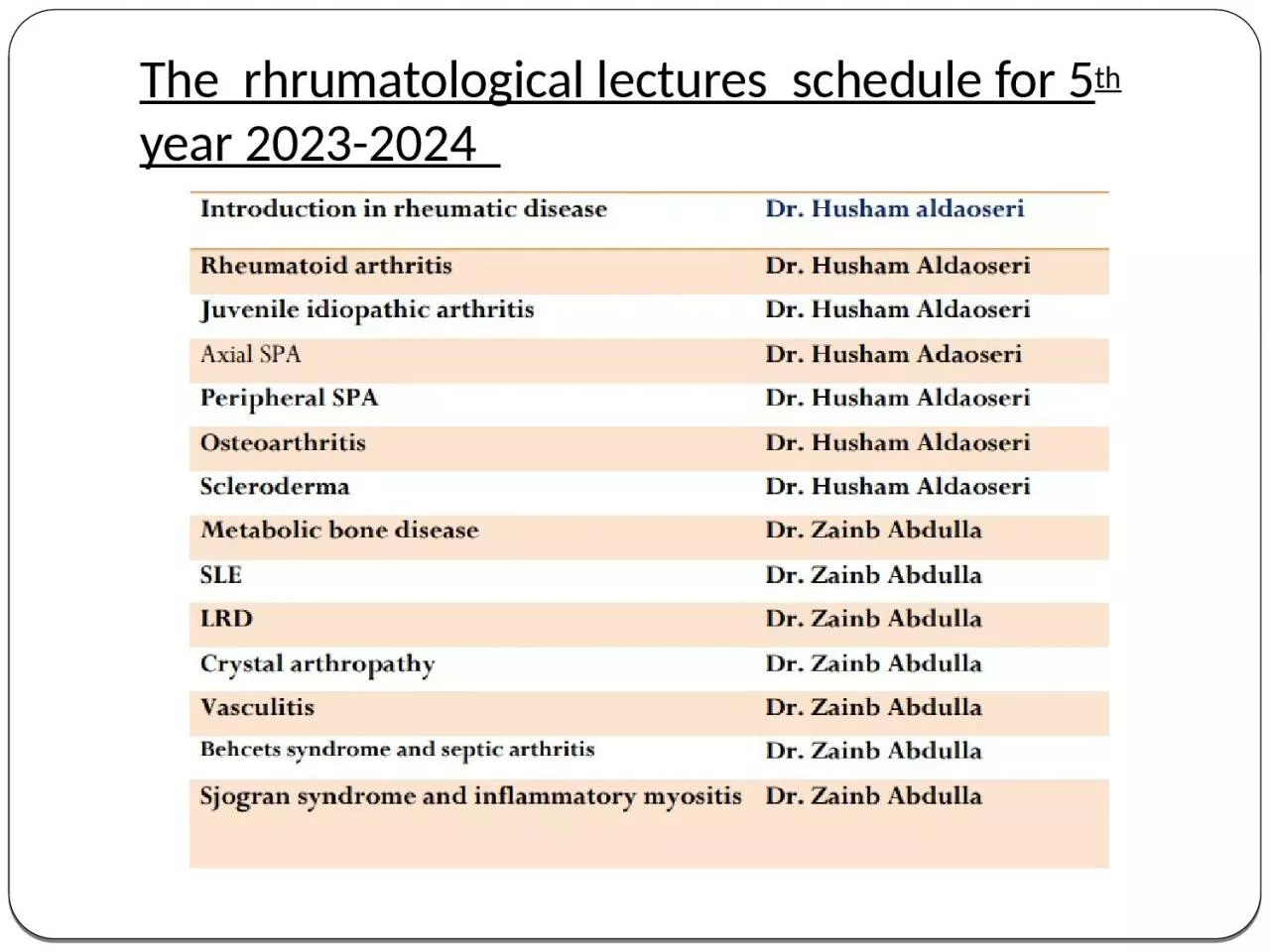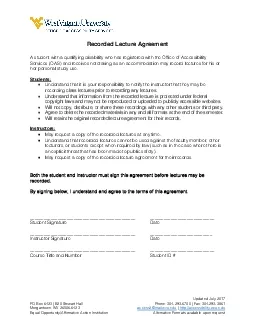PPT-The rhrumatological lectures schedule for 5
Author : nicole | Published Date : 2024-01-13
th year 20232024 INTRODUCTION TO RHEUMATOLOGY What is Rheumatology A medical science devoted to the study of rheumatic diseases and musculoskeletal disorders
Presentation Embed Code
Download Presentation
Download Presentation The PPT/PDF document "The rhrumatological lectures schedul..." is the property of its rightful owner. Permission is granted to download and print the materials on this website for personal, non-commercial use only, and to display it on your personal computer provided you do not modify the materials and that you retain all copyright notices contained in the materials. By downloading content from our website, you accept the terms of this agreement.
The rhrumatological lectures schedule for 5: Transcript
Download Rules Of Document
"The rhrumatological lectures schedule for 5"The content belongs to its owner. You may download and print it for personal use, without modification, and keep all copyright notices. By downloading, you agree to these terms.
Related Documents














